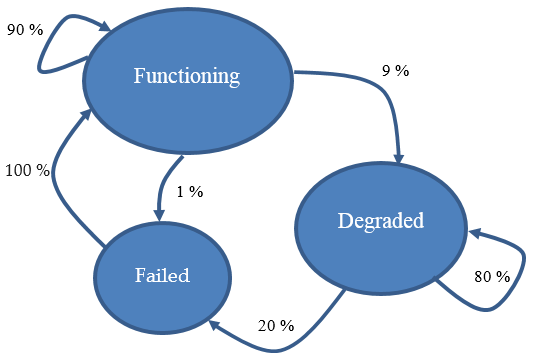Markov analysis is a method for analysing sequences of events performed using Markov models. It is widely used in many fields, including physics, pharmaceuticals, economics, biology, and computer science. Markov analysis has also found widespread use in health care because it can predict the probability that patients will move between different health states and what measures can be taken to improve their condition. In this article, learn more about Markov analysis and its value to health care.
If you are interested in how Markov models are applied to cost-effectiveness analysis, read here: https://digitalho.com/blog/markov-model-for-cost-effectiveness-analysis
Briefly about Markov analysis
Markov analysis is a popular method of analysing sequences of events in which the probabilities of moving from one state to another depend only on the current state and are independent of previous states. In other words, it allows you to predict a random variable based on the current circumstances surrounding it.
The process of Markov analysis involves the following steps:
- Collection of the data to be used in the analysis.
- Data pre-processing. In this step, the data is processed to eliminate unnecessary characters, words, or phrases and to bring the data into a convenient format for analysis.
- Creation of a transition matrix based on the received data, which displays the probabilities of transition from one state to another, taking into account the current state of the variable.
- Analysing the transition matrix to identify the most likely sequences of events.
- Creating a decision tree based on the transition matrix that can be used to predict the next state of the system and predict future outcomes.
- Testing and improving the model. In the last step, the model is tested with new data and improved if necessary to increase prediction accuracy.
Depending on the specific task, the Markov analysis process may include additional steps such as feature extraction, the definition of states, selection of optimal model parameters, etc.
Applications of Markov Analysis
Markov analysis can be used for complex systems with different structures, including:
- systems with parallel independent components;
- systems with sequential independent components;
- systems with distributed workloads;
- redundant systems, including the case where switching functions may fail;
- degraded systems.
Markov analysis can be performed either manually or using computer programs.
The value of Markov analysis is in its versatility and ability to be used in a variety of areas and fields, including:
- financial analytics – for predicting price changes in stocks, bonds and other financial instruments;
- speech recognition – to determine the probability of certain sounds or words appearing after previous sounds or words;
- machine translation – to analyse word sequences and determine the most likely translation;
- computer vision – Markov analysis is used to process images and video, allowing you to analyse a sequence of pixels or frames to determine the presence of objects and motion;
- natural language – to determine the probability of certain words or phrases appearing after previous words or phrases;
- predicting future values of time series, such as stock prices, temperature, or sales of commodities;
- genetics – Markov models can be used to analyse DNA sequences and predict genetic properties;
- cybersecurity – to analyse data flow in computer networks and detect anomalous behavior.
Markov analysis can also be used in health care. Most often, it is used to analyse the sequence of events associated with diseases and treatments. For example, it can be applied to study which prevention and treatment measures might be most effective in preventing the spread of disease.
What is the value of Markov analysis for healthcare
Markov analysis can also be used to assess health care quality and evaluate which treatment measures and procedures may be most effective and cost-effective for patients. For example, Markovian analysis can be used to analyse and predict aspects of the health care system such as:
- Predicting morbidity. Markovian analysis can help predict the likelihood that patients with a certain disease will need medical care in the future. This can help organise a more efficient health care system that delivers services where they are most needed.
- Treatment Effectiveness Analysis. Markov models are used to evaluate the effectiveness of different treatments, identify the most effective treatment strategies, and identify problem areas.
- Predicting your need for resources. This analysis can be used to estimate the need for various resources, such as drugs, medical equipment, and medical services.
- Patient Flow Modeling. Markov analysis can be used to model patient flow in a health care system and estimate various aspects such as length of hospital stay, likelihood of repeat visits, etc.
Thus, Markov analysis is a powerful tool for analysing sequences of events in healthcare, which can help determine the most effective measures to prevent diseases, improve healthcare quality and optimise treatment. Overall, Markovian analysis can help organise a more efficient and cost-effective healthcare system, improve the quality of care, and increase patient satisfaction.















